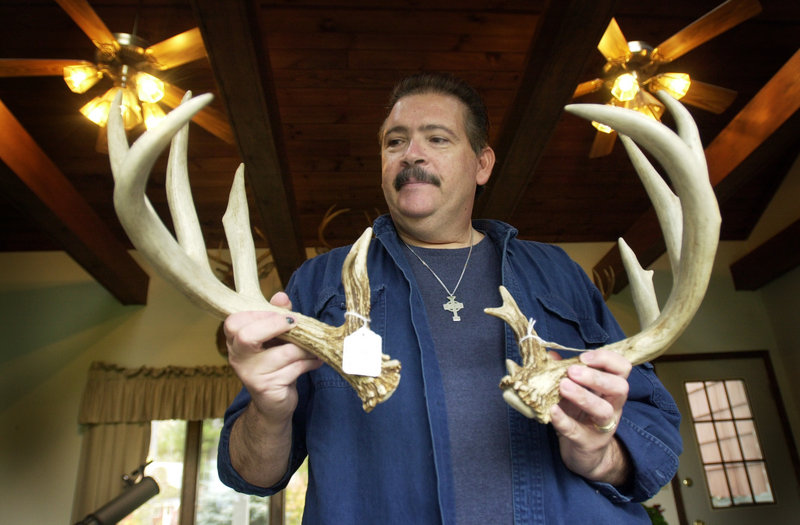A new year brings change and a shift in emphasis toward winter sports like ice fishing, snowshoeing, Nordic and Alpine skiing. Though priorities might shift, the hunting season never ends, especially for dedicated deer hunters. Regardless of their specific objective, whether it be hunting hares or coyotes in winter, turkeys in spring or mushrooms in summer, the deer hunter always has an eye out for signs like footprints and potential stand sites for the coming year.
Should you find yourself with a lack of proper motivation this time of year, consider shed hunting. Antlers that have been shed provide important clues to the number and caliber of bucks that made it through the hunting season, and where they hang out. They help fill the void between seasons with anticipation, and boost your confidence come next fall.
They also offer nearly unlimited potential for adorning your camp or home in the form of lamps, centerpieces, even furniture. Personally, I just can’t bring myself to cut, drill, glue or otherwise alter these magnificent examples of nature’s artwork; so mine end up in a pile in the corner of my family room, purely for admiration.
Start by looking in areas where bucks feed during prime shedding season, which in most of Maine begins now and can last into February or March. These may include orchards, oak stands, cut cornfields and late-season food plots. Look around the edges where deer enter or exit feeding areas.
The process sometimes becomes easier where winter food is scarce. A friend of mine once found three sheds around a big hemlock that had blown over in a Nor’easter. Porcupines feed extensively on hemlock in the winter and they’re sloppy eaters. An accumulation of small boughs dropped to the ground will attract opportunistic deer.
Next, follow deer trails from feeding to bedding areas. Look carefully around any place a deer has to jump across or over something — like a fence, a deadfall or a creek — where antlers may jar loose. And don’t be afraid to follow less-used trails leading to thicker cover, which bigger, older deer tend to favor.
Eventually you’ll end up in a bedding area, which can be a great place to find sheds. I once found a matched pair of sheds lying on either side of a large bed. Remember, deer seek shelter from the elements in the winter so you’ll most often find beds in protected areas like softwood bottoms or the leeward side of a slope, particularly with a southerly exposure.
Most successful shed hunters have developed a search image. Like the deer hunter who looks for part of a deer rather than the whole thing, the trained eye of a shed hunter searches for colors and shapes, like white against a dark forest floor, or a tine sticking up out of the snow.
Obviously, fresh signs show up better when there’s snow on the ground. Deep snow tends to concentrate deer into yards — making them easier to find but sometimes making antlers more difficult to locate. However, you can enlist some help from man’s best friend. Some dogs seem to have a knack for finding sheds, others may need a little coaxing. And there are even breeders now who specifically train dogs to find sheds.
Very deep snow may put your hunting on hold for a bit, but hope springs eternal. Late winter meltdown and early spring rains bring new motivation and opportunity to scout for signs and hunt for sheds that have laid sequestered under a blanket of snow. At the same time, you can be scouting turkeys — their season won’t be long away.
Bob Humphrey is a freelance writer and Registered Maine Guide who lives in Pownal. He can be contacted at:
bhhunt@maine.rr.com
Send questions/comments to the editors.



Success. Please wait for the page to reload. If the page does not reload within 5 seconds, please refresh the page.
Enter your email and password to access comments.
Hi, to comment on stories you must . This profile is in addition to your subscription and website login.
Already have a commenting profile? .
Invalid username/password.
Please check your email to confirm and complete your registration.
Only subscribers are eligible to post comments. Please subscribe or login first for digital access. Here’s why.
Use the form below to reset your password. When you've submitted your account email, we will send an email with a reset code.